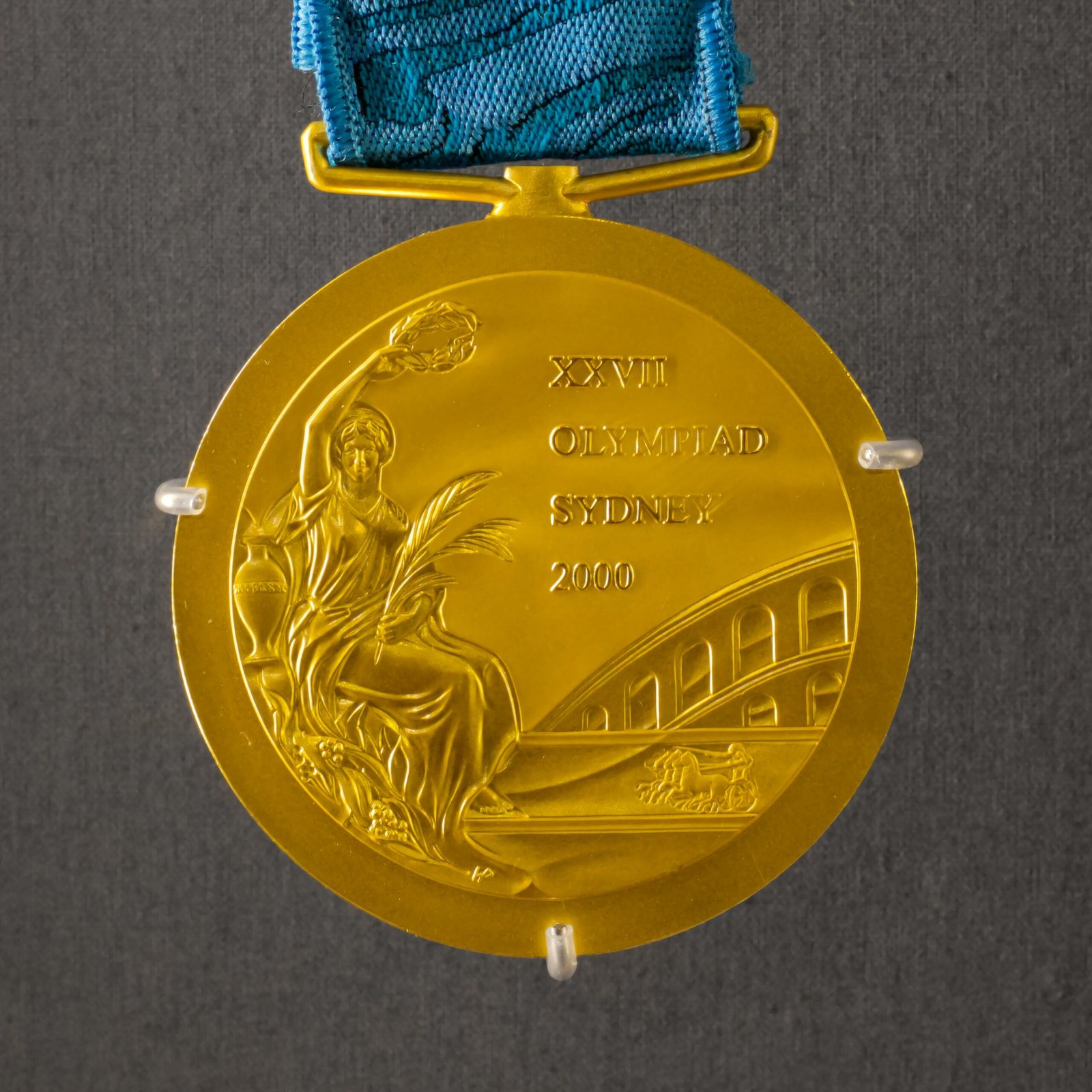
Olympic sailing is a sport that combines the beauty of the open sea with the fierce competition of the Olympic Games. It is a sport that requires not only physical strength and endurance but also mental agility and strategic thinking. Sailors must navigate the unpredictable winds and currents, making split-second decisions that can make or break their chances of winning a medal.
One of the most fascinating aspects of Olympic sailing is the variety of classes in which sailors compete. Each class represents a different type of sailboat, with its own unique characteristics and challenges. From the high-speed adrenaline rush of the 49er class to the tactical precision of the Laser class, there is a class to suit every type of sailor.
But it’s not just the boats that make Olympic sailing so thrilling. The racecourses themselves are carefully designed to test the skills of the sailors. They often feature multiple buoys that sailors must navigate around, as well as windward and leeward marks that require precise maneuvering. The racecourses can be set in a variety of conditions, from calm waters to choppy seas, adding an extra layer of difficulty.
One of the most challenging aspects of Olympic sailing is the unpredictable nature of the wind. Sailors must constantly adjust their sails and tactics to take advantage of the ever-changing conditions. A sudden shift in wind direction or intensity can completely alter the outcome of a race, requiring sailors to think on their feet and adapt their strategies accordingly.
Another challenge that sailors face is the intense competition. The Olympic Games bring together the best sailors from around the world, each with their own unique skills and experience. The level of competition is incredibly high, with every sailor pushing themselves to the limit in pursuit of victory. Olympic sailors must not only be physically fit but also mentally strong, able to handle the pressure and stay focused under the intense scrutiny of the global audience.
Despite the challenges, Olympic sailing is a sport that captivates both participants and spectators alike. The thrill of racing against the best in the world, the beauty of the open sea, and the sense of accomplishment that comes with representing your country on the Olympic stage – these are just a few of the reasons why Olympic sailing continues to be a beloved sport.
In conclusion, Olympic sailing is a sport that combines physical prowess with mental agility. It is a sport that challenges sailors to navigate the unpredictable winds and currents, making split-second decisions that can determine their success. With its variety of classes, challenging racecourses, and intense competition, Olympic sailing is a thrilling and captivating sport that captures the hearts of sailing enthusiasts around the world.
Over the years, Olympic sailing has witnessed significant changes and advancements. The sport has not only grown in terms of the number of events but has also seen improvements in technology, equipment, and safety measures. These developments have made Olympic sailing a highly competitive and thrilling sport.
One of the major changes in Olympic sailing was the introduction of women’s events. In 1988, women’s sailing made its debut in the Olympic Games, marking a significant milestone in gender equality within the sport. Since then, women have been actively participating and excelling in various sailing events, showcasing their skills and determination.
Another notable development in Olympic sailing is the inclusion of mixed-gender events. In recent years, the International Olympic Committee (IOC) has been working towards promoting gender balance and diversity in sports. As a result, mixed-gender events were introduced in sailing, allowing male and female athletes to compete together as a team. This has not only added a new dynamic to the sport but has also provided opportunities for collaboration and camaraderie between athletes of different genders.
Furthermore, advancements in technology have had a profound impact on Olympic sailing. Sailboats have become faster, more maneuverable, and more efficient, thanks to innovations in hull design, sail materials, and rigging systems. These technological advancements have not only improved the performance of athletes but have also made the sport more exciting for spectators.
Alongside technological advancements, safety measures have also been a key focus in Olympic sailing. The International Sailing Federation (ISAF) has implemented strict regulations and guidelines to ensure the safety of athletes during competitions. These measures include mandatory safety equipment, rigorous training programs, and constant monitoring of weather conditions. By prioritizing safety, Olympic sailing has become a sport that not only tests the skills and abilities of athletes but also ensures their well-being.
Looking ahead, the future of Olympic sailing seems promising. The sport continues to attract talented athletes from around the world, and the level of competition continues to rise. As technology continues to advance, we can expect even more exciting developments in boat design and performance. Additionally, efforts to promote gender equality and diversity within the sport are likely to continue, further enhancing the inclusivity and global appeal of Olympic sailing.
5. RS:X
The RS:X class is the windsurfing event in Olympic sailing. It is a thrilling spectacle to watch as sailors harness the power of the wind to glide across the water. This event demands not only physical strength but also technical skill and tactical decision-making. Sailors must constantly adjust their sail and body position to maintain balance and control.
6. 49er
The 49er class is a high-performance skiff event that showcases the speed and agility of Olympic sailors. This two-person dinghy is equipped with a trapeze system, allowing the crew to hang off the side of the boat to counterbalance its heeling motion. The 49er class requires a combination of athleticism, quick reflexes, and precise teamwork.
7. Women’s Skiff
The women’s skiff event was introduced to the Olympic sailing program in 2016. It features the 49erFX class, which is similar to the 49er but sailed exclusively by female athletes. This event has brought a new level of excitement and competitiveness to women’s sailing, showcasing the skill and talent of female sailors on the world stage.
8. Men’s and Women’s Windsurfer
Both the men’s and women’s windsurfer events are contested in the RS:X class. These events require a combination of physical fitness, technical expertise, and strategic thinking. Sailors must navigate the course, making tactical decisions to take advantage of wind shifts and currents. The men’s and women’s windsurfer events are highly competitive and showcase the athleticism and skill of the sailors.
9. Mixed Offshore
The mixed offshore event is a new addition to the Olympic sailing program, set to make its debut in the 2024 Paris Olympics. In this event, teams of one male and one female sailor will compete in a long-distance race on offshore boats. This event will test the endurance, navigation skills, and teamwork of the sailors as they navigate challenging conditions and race against the clock.
Overall, the Olympic sailing events offer a diverse range of challenges and require different skill sets. From the high-speed action of the skiffs to the tactical decision-making in the windsurfers, each event showcases the athleticism, skill, and determination of the sailors. The Olympic sailing competition is a true test of the sailors’ abilities and provides a thrilling spectacle for spectators around the world.
5. Navigation and Course Strategy
In addition to the physical and mental demands, Olympic sailors must also possess excellent navigation skills and develop effective course strategies. They need to analyze the racecourse, taking into consideration factors such as wind patterns, currents, and potential obstacles. By strategically planning their route, sailors can gain a competitive advantage over their opponents.
6. Teamwork and Communication
Olympic sailing often involves teams of two or more sailors working together to maneuver the boat and make split-second decisions. Effective teamwork and communication are essential for success on the water. Sailors must be able to trust and rely on their teammates, coordinating their movements and tactics seamlessly.
7. Travel and Logistics
Competing in the Olympics requires extensive travel and logistical planning. Sailors must navigate through various time zones, adapt to different climates, and ensure that their equipment arrives safely at each venue. This can be physically and mentally exhausting, adding an additional layer of challenge to their Olympic journey.
8. Pressure and Expectations
The Olympics are the pinnacle of a sailor’s career, and with that comes immense pressure and expectations. Athletes must perform at their best under the scrutiny of the world’s eyes. The weight of representing their country and the desire to win a medal can be overwhelming, testing their ability to stay focused and perform under pressure.
9. Rule Compliance
Olympic sailing is governed by strict rules and regulations. Sailors must have a thorough understanding of these rules and ensure that they comply with them during races. Failing to adhere to the rules can result in penalties or disqualification, potentially ruining their chances of achieving Olympic success.
10. Financial Constraints
Participating in Olympic sailing can be financially demanding. Sailors often have to fund their training, equipment, and travel expenses, which can be a significant burden. Securing sponsorships and financial support is crucial for many athletes to pursue their Olympic dreams.
Despite these challenges, Olympic sailors are driven by their passion for the sport and their desire to represent their country on the world stage. They dedicate countless hours to training, honing their skills, and overcoming obstacles, all in pursuit of Olympic glory.
The Road to Olympic Glory
Becoming an Olympic sailor requires years of dedication, hard work, and sacrifice. Sailors must start training at a young age and spend countless hours honing their skills on the water. They compete in national and international regattas, aiming to qualify for the Olympic Games.
Once qualified, sailors undergo rigorous training camps and work closely with coaches and support staff to fine-tune their techniques and strategies. They analyze their performances, learn from their mistakes, and constantly strive to improve.
At the Olympic Games, sailors face a series of races, with points awarded based on their finishing positions. The ultimate goal is to accumulate the fewest points possible and secure the gold medal. The competition is fierce, and the stakes are high.
But the journey to Olympic glory is not just about physical training and technical skills. It also requires mental strength and resilience. Sailors must learn to cope with the pressure of competing on the world stage, where the smallest mistake can cost them a medal.
They have to deal with unpredictable weather conditions, strong currents, and challenging racecourses. The ability to adapt quickly to changing circumstances and make split-second decisions can make all the difference between victory and defeat.
Furthermore, Olympic sailors must also navigate the complex world of sponsorship and funding. As sailing is an expensive sport, securing financial support is crucial for athletes to sustain their training and participation in competitions.
They have to approach potential sponsors, pitch their achievements and goals, and negotiate partnerships. This requires excellent communication skills and the ability to present themselves as valuable assets to corporate sponsors.
Additionally, Olympic sailors often have to balance their training and competition schedules with their academic or professional commitments. Many athletes pursue higher education or hold jobs to support themselves financially.
Managing time effectively becomes essential to ensure they can dedicate enough hours to training while also fulfilling their other responsibilities. It is a delicate balancing act that requires discipline and careful planning.
Despite the challenges, the pursuit of Olympic glory is a dream that drives sailors to push their limits and strive for excellence. The opportunity to represent their country on the Olympic stage is a tremendous honor and a culmination of years of hard work and sacrifice.
Ultimately, becoming an Olympic sailor is not just about winning medals. It is about the journey of self-discovery, personal growth, and the pursuit of a passion that transcends the boundaries of sport. It is a testament to the indomitable spirit of human beings and the power of determination.




